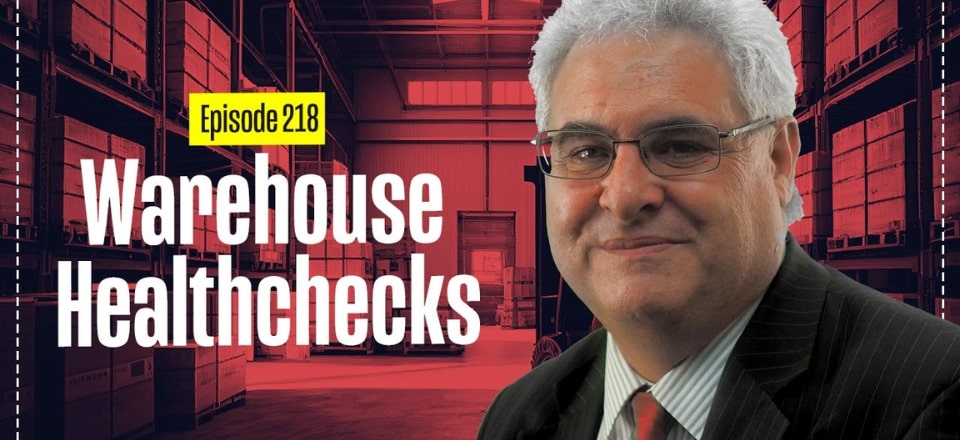Conducting a health check for your warehouse is essential.
This evaluation helps optimize capacity and processes, ensuring your warehouse operates at its best.
You might have overlooked some critical red flags.
Watch the video below to discover these indicators and improve your warehouse performance.
Understanding Warehousing Health Checks
Warehousing health checks are crucial for identifying and addressing inefficiencies in warehouse operations. John Monk from Logistics Bureau shares his expertise on how these checks can reveal opportunities for improvement.
Identifying Common Warehouse Issues
A common issue during warehousing health checks is the misconception that a warehouse is fully utilized when it might actually have more space. Many clients believe their warehouses are running efficiently, but they might be losing time due to poor layout designs. For example, a warehouse might seem congested due to blocked aisles or improperly utilized storage locations. By reorganizing the layout—such as adopting an arrow aisle design—it’s often possible to increase capacity by 20-30%. This reconfiguration helps to use the existing space more effectively without needing to expand the facility.
Strategies for Enhancing Capacity
Adding mezzanine floors is a frequent approach to boost warehouse capacity, but this method has its limitations. Mezzanines can be expensive and may slow down operations because of additional equipment requirements, like elevators. Alternative methods can be more practical. High-density shelving systems or mobile equipment can optimize space utilization without the need for a mezzanine. Additionally, articulated forklifts are beneficial in narrow aisles, allowing for tighter storage configurations and better maneuverability, which helps maximize space even in confined areas.
Optimizing Warehouse Efficiency
Improving warehouse efficiency involves several strategies. One quick assessment method is the “dust test,” which involves checking for dust on products near the dispatch area. Dusty items indicate they are slow-moving and not placed optimally. High-turnover items should be positioned closer to packing and dispatch areas to reduce travel time and enhance picking efficiency. Observing congestion in areas such as receiving docks can also reveal workflow issues. Bottlenecks in receiving or put-away processes can disrupt overall efficiency and need to be addressed.
Practical Tips for Warehouse Assessment
To evaluate warehouse operations effectively, start by examining the layout and observing employee travel distances. Long travel distances often signal poorly optimized storage locations. Additionally, look for congestion in key areas like receiving, picking, and packing. Bottlenecks in these areas can significantly affect warehouse performance. By making these observations and implementing adjustments, significant improvements in efficiency and capacity can be achieved.
Advanced Techniques and Innovations
Advanced technologies and techniques are increasingly used to enhance warehouse operations. Automated systems, such as robotic solutions and automated mobile robots (AMRs), are becoming more common. These systems improve efficiency by bringing shelves directly to workers, reducing manual movement, and increasing picking speed. For instance, Amazon’s fulfillment centers use multi-level storage with AMRs, optimizing space and efficiency without needing excessively tall racks.
Related articles on this topic have appeared throughout our website, check them out:
- Warehouse Product Slotting: The Ultimate Guide
- The 7 Principles of Warehouse and Distribution Centre Design
- Planning a Warehouse Network and Design: Key Factors to Consider
- Spotlight on: 7 Key Warehouse Processes
- 10 Proven Principles for Best Warehouse Design and Operation
Editor’s Note: The content of this post was originally published on Logistics Bureau’s website dated December 27, 2023, under the title “Warehouse Health Checks with John Monck“.


